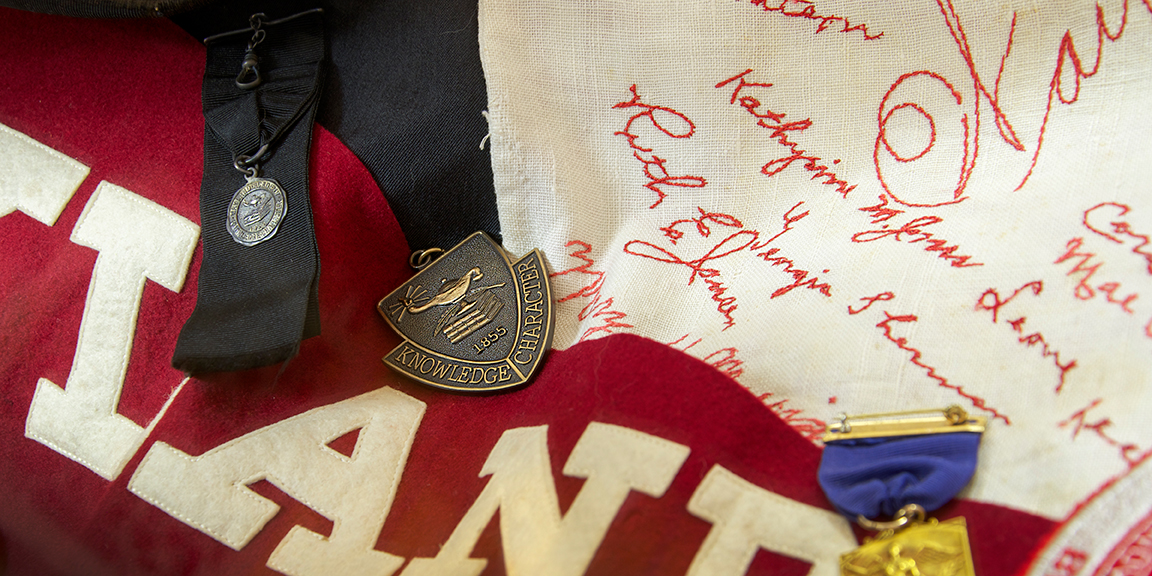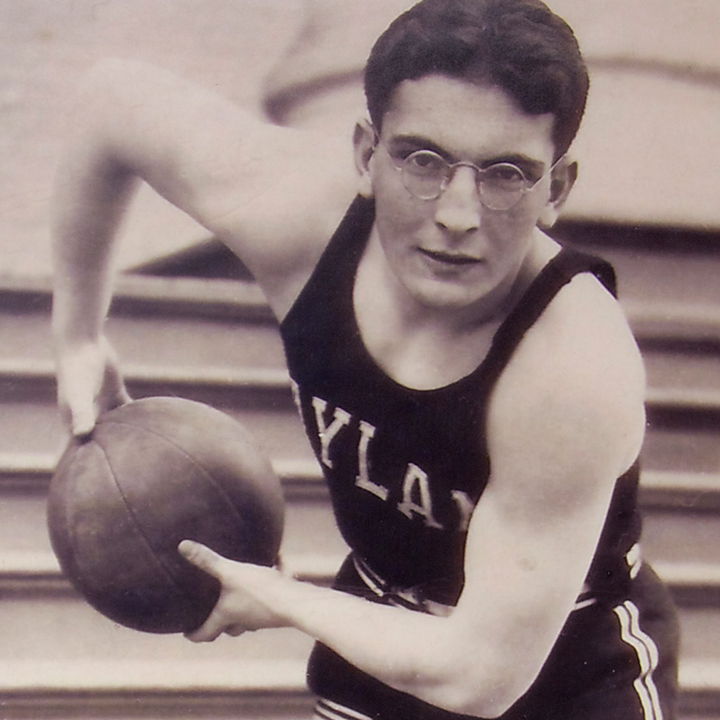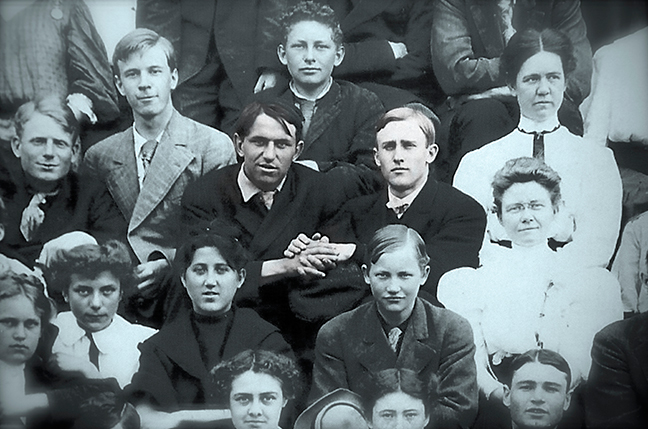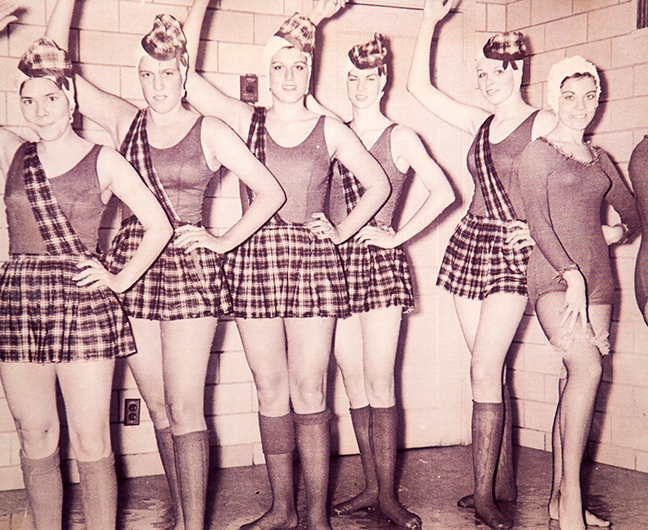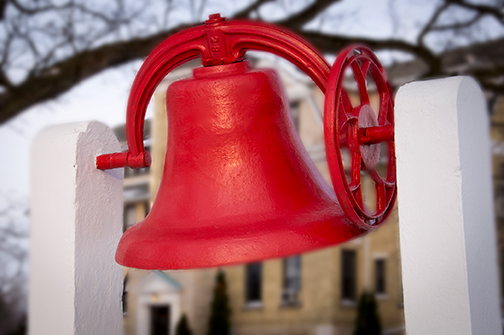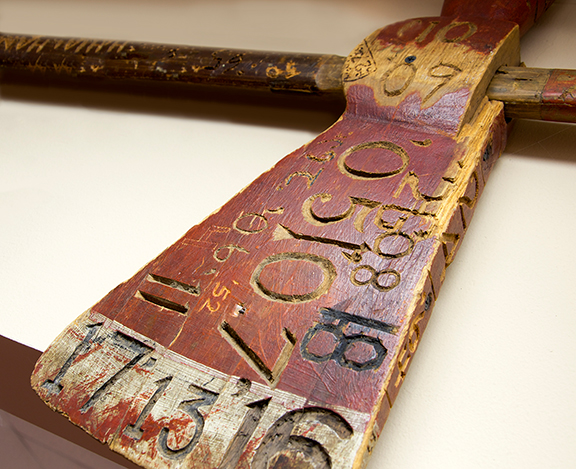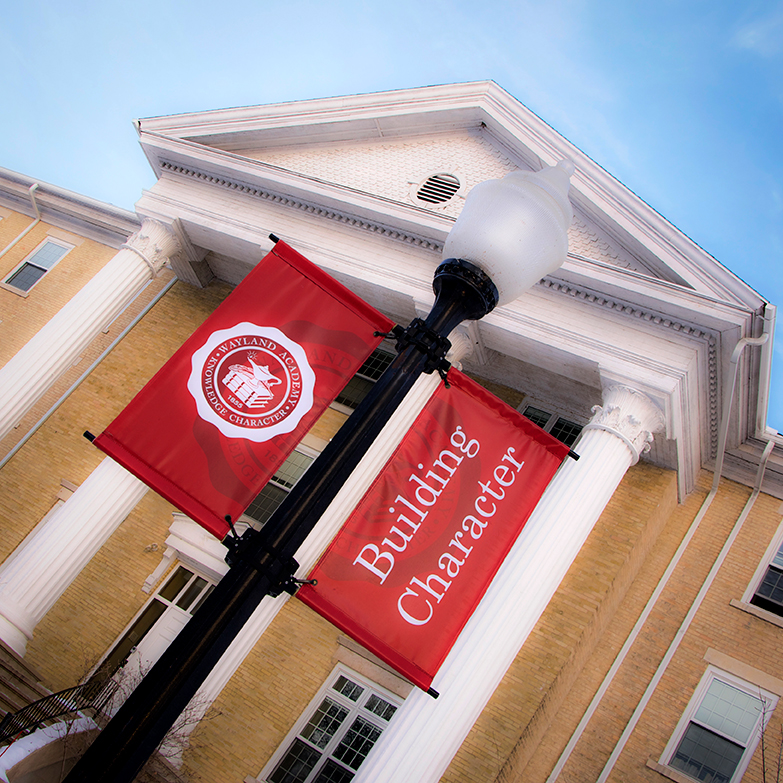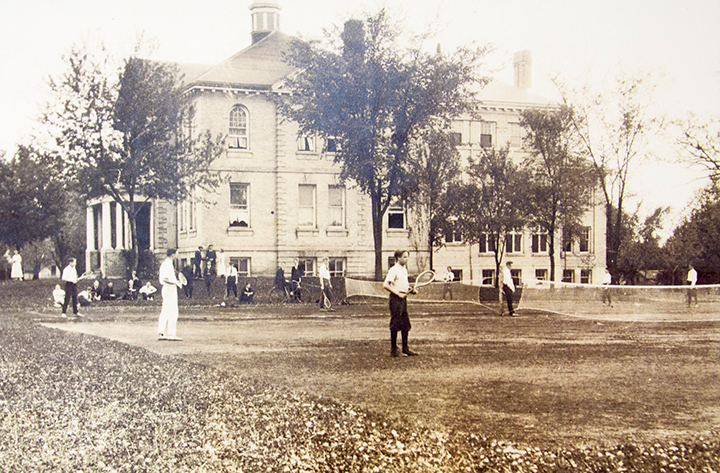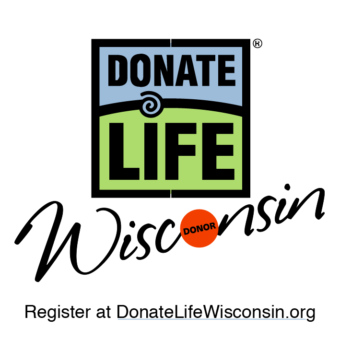
By: Karla Jensen
On an icy snow covered day on Wayland Academy’s silvery campus in Beaver Dam, a trail of frozen footprints of faculty, staff and students wend around buildings and upon newly shoveled sidewalks. The snow has melted around these icy tracks but they remain. The footsteps appear welcoming and warm, like one could just give up on where she was headed and instead, follow them to exotic locations in faraway corners of the campus. From the top of Wayland Hall to the tucked away corners of the campus museum underground, the ghosts of history haunt many sacred old and new spaces within an institution that is soon celebrating its 160th Founders Day on January 31, 2015.
One cannot mention Beaver Dam history without also noting the blossoming of Wayland Academy as a longstanding educational marvel. Despite all odds, through dramatic changes in leadership, economies, The Great Depression, and even war and peace, Wayland has thrived. The Wisconsin State Legislature approved the charter for Wayland University on January 31, 1855. One-hundred-sixty years later, dedicated forces remain at work to follow the mission of those early visionaries who strongly believed in the “dynamics of learning in an intimate, cohesive, small school atmosphere,” taken from The Sesquicentennial Story: 150 Years of Knowledge and Character, printed for Wayland’s 150th anniversary in 2005. One can feel the presence of these long ago pioneers of education accompanying those who stand on this primeval ground today. Echoes of students past whisper their encouragement in the wind. It’s easy to imagine the enthusiasm of principals and professors in the carillon bells chiming onward.
Founder’s Day is celebrated reverently at Wayland and among alumni and friends, especially since the Academy actually closed its doors twice before persevering permanently. “In 1857, the Depression hit the country, interest rates skyrocketed, financial backers for Wayland Hall defaulted, and trustees and teachers, after multiple frequent meetings, could find no solution other than closure of the school.” Hard times closed the doors again briefly by June 1860. By September 1861, open for business again, declining male enrollment due to the Civil War forced the school to consider welcoming women. They did. From 1868 to 1875, Wayland developed as a private high school rather than a university and the rest is history.
The school celebrated their 75th anniversary in 1930. College Hall was renamed Wayland Hall and is the most recognized building on campus. On May 1, 1938, the first Founder’s Day was celebrated. The school was about to embark on major campus improvements and additions. In only a few years, enrollment would spike from 93 in 1943 to 240 in 1946. The demand for new dorms would be forthcoming. Headmaster Raymond Patterson (1953-1970) was as innovative as the space program, skyrocketing the campus in a number of directions and growth exploded. Patterson also convinced the Chicago Cardinals to host summer training camps at Wayland.
Like the baton passed to American presidents throughout the generations, Wayland Academy has flourished under the watchful eye of 20 presidents, principals or heads of schools. They each brought their own gifts and personalities. From the very beginning, Principal Benjamin Newell set history in motion as the first Wayland leader declaring Wayland open for business with one student and one faculty member. Enrollment and faculty have grown since then. The current Head of School is Joseph Lennertz, leading nearly 50 faculty and staff, and 184 students enrolled.
Wayland is a grand old dame that has not lost her mystery. She’s enjoyed a facelift or two and necessary tuck pointing to brighten her façade, but underneath, she is railroad sturdy. She provides a focused track, aimed at broadening character and education. The campus is as robust as a locomotive, moving full steam ahead, alive with learned adolescents who keep her company, many from around the world. Expectations are high and obstacles to success are low. Few comprehend the great bubbling melting pot of academia and personal growth percolating in the library, dining hall, English hall, dorm room, locker room, football field, or community service field at any given time. Wayland’s allure is that she is timeless and timely. She has a language all her own and you must hearken to hear her wisdom.
History shapes character. It’s not difficult to see the footprints, the imprints, the contributions left by the men and women who loved their alma mater. Like any other grand institution, Wayland has adopted some curious long lasting traits that set her apart. Principal Nathan Wood (1877-1884) left his mark by creating three milestones that distinguish Wayland from other schools even today. Wood created “Greetings” that is now the oldest preparatory school alumni magazine in the country. He also established two traditions; one being a senior gift offered to the school, “that have slowly built up the environment and mystique of the Academy,” suggests The Sesquicentennial Story; the other the Axe Tradition, whereby seniors devise puzzles and clues for the juniors to locate the hidden Axe, an original of which hangs in the distinctive but little known Wayland Museum.
Surveying relics and viewing larger than life Academy memorabilia in the Wayland Museum and archives is a slow dance to be cherished. With every turn of the corner, every deliberate step forward and back, a glorious feeling of honor and devotion is bestowed by these gifts of history. Even if one has had no connection to the institution itself, there’s a sentiment as heavy as a woman’s fragrance that can’t be dismissed. Wayland is part of Beaver Dam and Beaver Dam is part of Wayland. The bouquet of backstory settles over the silence as vivid images and words tell the true Wayland story…that she was born here, grew up here and has lived a full life here, not about to retire anytime soon.
The archives, housed in the same building as the museum, are equally as enthralling. In the Academic Building, the archives safeguard interesting bits of history including student publications dating back to 1856, admissions view books from 1857 onward, student handbooks, attendance records, vintage print plates, textiles, letter jackets, and photos from 1880 to present including faculty, students, fine arts and athletic photos. Wayland’s museum was designed for the Sesquicentennial 150-year celebration, withdrawing valuables as if from a bank vault to share with the community, students and alumni.
With the upcoming Founder’s Day Celebration for their 160th Anniversary, Wayland Academy wishes to invite the public, especially those who may not have had an opportunity to explore the esteemed history in the Wayland Museum. Special hours for museum tours are from 1-4 p.m. on Saturday, January 31. On March 18, Wayland looks forward to welcoming the business community for a special Business After Hours showcasing the STEAM lab, newly renovated Swan Library and museum. The community is invited as well to the Annual Fundraising Gala on Saturday, April 18. Watch for ticket information early this spring.
The founders of Wayland would be impressed at how their enchanting worldly lady has aged so gracefully and prospered. So would Abram Ackerman who offered an attractive bid of $500 to the founders circa 1854 for this land to be used for a greater purpose. The entire Wayland community works in tandem to promote that greater purpose and uphold the four pillars of the school – scholarship, faith, health and service, no matter where the student hails from. The global atmosphere feels as if the world is a much smaller place at Wayland than anywhere else in Beaver Dam, what with nearly one quarter of the student body from international locations. There’s a flavor on campus you can’t recreate anywhere else, and once you get a small taste, you only want a bigger bite.
For more information on Wayland Academy, log onto www.wayland.org or contact Karla R. Jensen, Director of Auxiliary Programs and Outreach at (920) 356-2120, ext. 236.
